
Legazpi: The Gateway to Mayon Volcano
Discover Legazpi, a city of adventure and beauty, where the iconic Mayon Volcano serves as a stunning backdrop to rich cultural heritage and thrilling outdoor activities.
Nestled in the province of Albay, Legazpi is a vibrant city renowned for its breathtaking views of the majestic Mayon Volcano. The volcano, with its near-perfect cone shape, dominates the skyline and provides a dramatic backdrop for the city's bustling streets and serene landscapes. Legazpi offers a wealth of activities for adventure enthusiasts and nature lovers alike. Visitors can trek up the slopes of Mayon Volcano, explore the subterranean wonders of Hoyop-Hoyopan Cave, or take in panoramic views from the Lignon Hill Nature Park. For those who prefer a more relaxed pace, the city's waterfront promenade, Embarcadero de Legazpi, offers a delightful mix of shopping, dining, and entertainment options. The rich cultural heritage of Legazpi is evident in its historic landmarks, such as the Cagsawa Ruins, a poignant reminder of the volcanic eruption in 1814. The city also boasts a vibrant culinary scene, with local delicacies like Bicol Express and Pinangat providing a delicious taste of the region's spicy flavors. Whether you're an avid adventurer, a history buff, or a foodie, Legazpi promises an unforgettable experience.
Local tips in Legazpi
- Visit during the dry season from November to May for the best chance of clear views of Mayon Volcano.
- Wear comfortable shoes if you plan to hike up Mayon Volcano or explore the city's natural attractions.
- Try the local cuisine, especially the spicy Bicol Express and the savory Pinangat.
- Bring cash, as some smaller shops and eateries may not accept credit cards.
- Check local advisories for volcanic activity before planning your hike up Mayon Volcano.
Neighbourhoods in Legazpi
Legazpi: The Gateway to Mayon Volcano
Nestled in the province of Albay, Legazpi is a vibrant city renowned for its breathtaking views of the majestic Mayon Volcano. The volcano, with its near-perfect cone shape, dominates the skyline and provides a dramatic backdrop for the city's bustling streets and serene landscapes. Legazpi offers a wealth of activities for adventure enthusiasts and nature lovers alike. Visitors can trek up the slopes of Mayon Volcano, explore the subterranean wonders of Hoyop-Hoyopan Cave, or take in panoramic views from the Lignon Hill Nature Park. For those who prefer a more relaxed pace, the city's waterfront promenade, Embarcadero de Legazpi, offers a delightful mix of shopping, dining, and entertainment options. The rich cultural heritage of Legazpi is evident in its historic landmarks, such as the Cagsawa Ruins, a poignant reminder of the volcanic eruption in 1814. The city also boasts a vibrant culinary scene, with local delicacies like Bicol Express and Pinangat providing a delicious taste of the region's spicy flavors. Whether you're an avid adventurer, a history buff, or a foodie, Legazpi promises an unforgettable experience.
When is the best time to go to Legazpi?
Iconic landmarks you can’t miss
Cagsawa Ruins
Discover the historical significance and breathtaking views at Cagsawa Ruins, where the remnants of the past meet the natural beauty of Mayon Volcano.
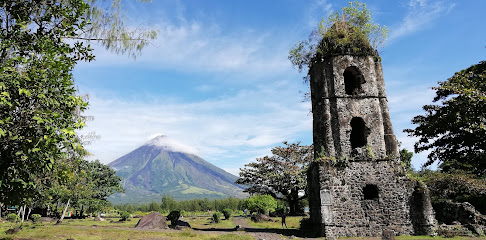
SM City Legazpi
Discover the ultimate shopping experience at SM City Legazpi, where local culture meets modern retail therapy.
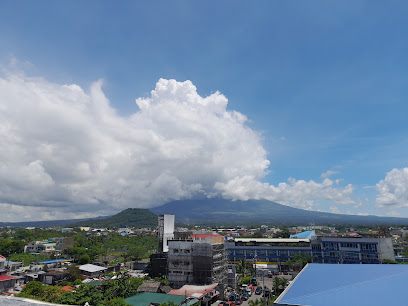
Ayala Malls Legazpi
Experience the vibrant shopping and dining scene at Ayala Malls Legazpi, where local culture meets modern convenience in the heart of Legazpi City.
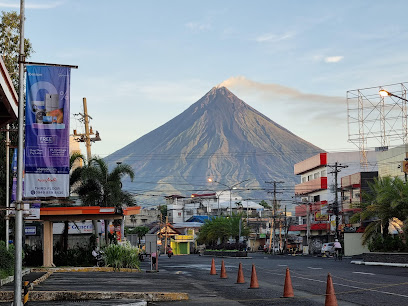
Pacific Mall
Explore the vibrant Pacific Mall in Legazpi City, where shopping, dining, and entertainment converge in a lively atmosphere.
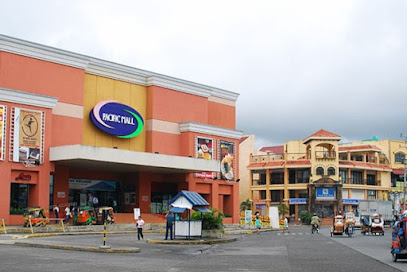
Mayon Volcano Natural Park
Discover the breathtaking beauty and adventure of Mayon Volcano Natural Park, a must-visit destination in Albay, Philippines.
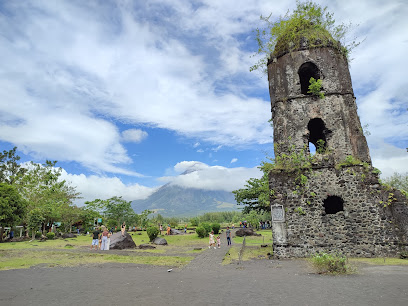
Daraga Church
Discover the architectural beauty and spiritual serenity of Daraga Church, a must-visit landmark in Albay with stunning views of Mayon Volcano.
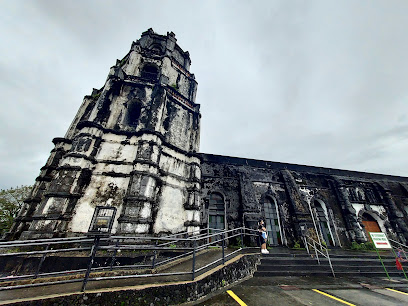
Ligñon Hill Nature Park
Explore the breathtaking views and serene beauty of Ligñon Hill Nature Park, a must-visit destination in Albay for nature lovers and adventure seekers.
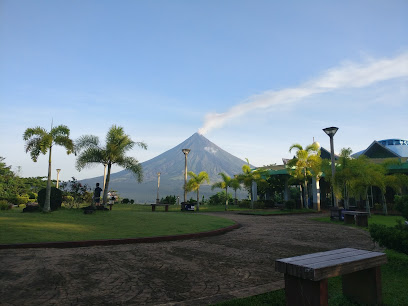
Embarcadero de Legazpi
Explore Embarcadero de Legazpi, a vibrant waterfront hub in Legazpi City, offering stunning views, delightful dining, and exciting cultural experiences.
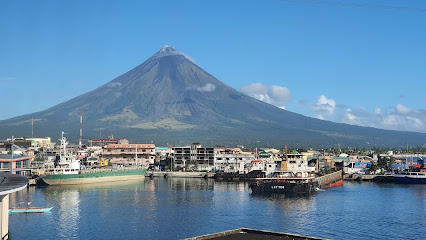
Peñaranda Park
Discover the tranquil beauty of Peñaranda Park in Legazpi City, a lush green oasis that blends nature and culture for an unforgettable experience.
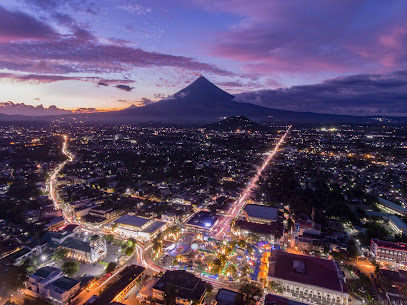
Albay Park & Wildlife
Explore the enchanting Albay Park & Wildlife in Legazpi City, where nature and wildlife come together for an unforgettable experience.
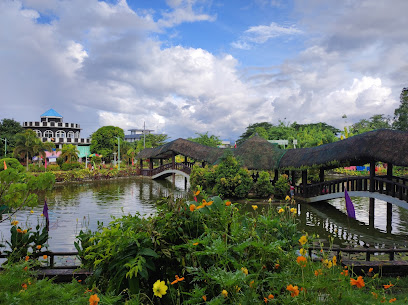
The Oriental Legazpi
Discover luxury and breathtaking views at The Oriental Legazpi, your perfect retreat in the heart of Albay, Philippines.

St. Gregory the Great Cathedral (Catedral de San Gregorio Magno)
Discover the magnificent St. Gregory the Great Cathedral in Legazpi City, a stunning blend of history, architecture, and culture waiting for your visit.
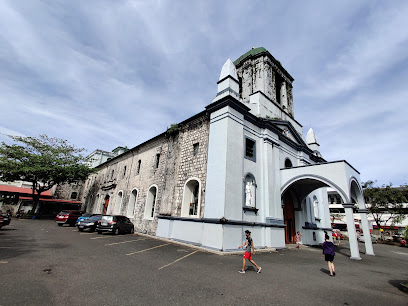
Kalayaan Park
Explore the lush greenery and rich cultural heritage of Kalayaan Park, a tranquil escape in Legazpi City, Albay with stunning views of Mayon Volcano.
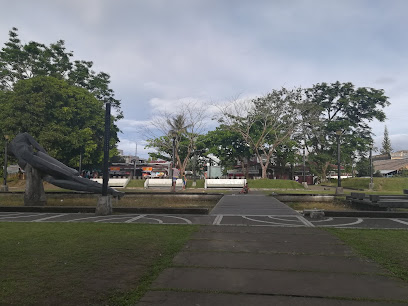
1st Colonial Grill
Experience the authentic taste of Filipino cuisine at 1st Colonial Grill in Legazpi, where tradition meets innovation in every dish.
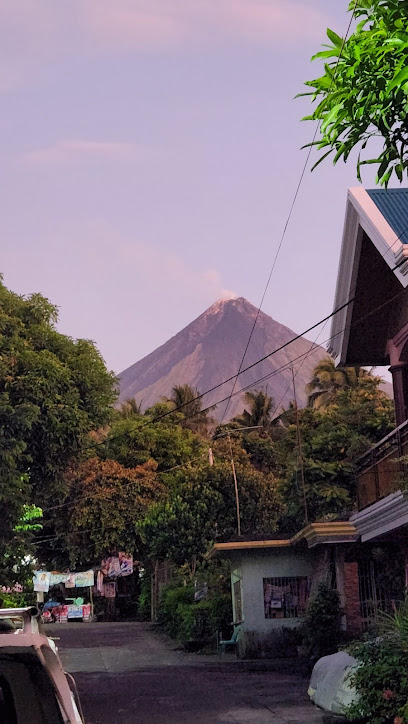
Albay Astrodome
Experience the vibrant energy of Albay Astrodome, Legazpi City's premier arena for sports, culture, and community events.
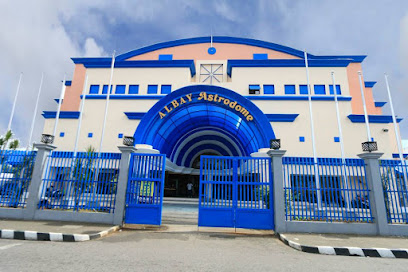
Unmissable attractions to see
Mayon Volcano Natural Park
Explore the breathtaking Mayon Volcano Natural Park in Albay, a UNESCO World Heritage site known for its stunning landscapes and rich biodiversity.
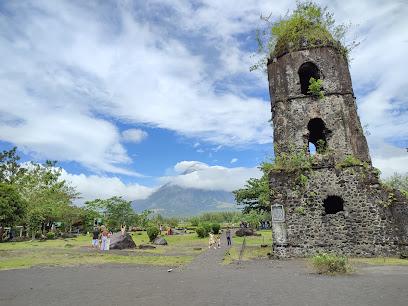
Mayon Volcano Natural Park
Experience the breathtaking beauty of Mayon Volcano Natural Park, a true natural wonder in Albay, Philippines, perfect for nature lovers and adventure seekers.
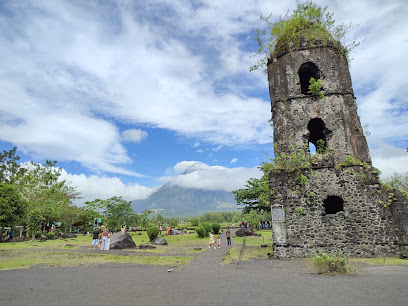
Daraga Church
Discover the architectural beauty and historical significance of Daraga Church, a must-visit landmark in Albay, Philippines with breathtaking views of Mayon Volcano.
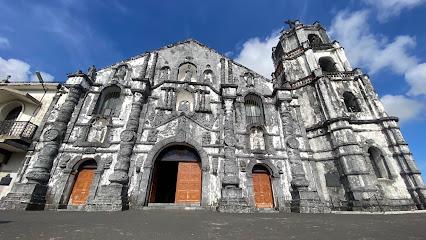
Misibis Bay Resort
Discover the ultimate luxury escape at Misibis Bay Resort, where pristine beaches and lush landscapes meet exceptional hospitality in Albay, Philippines.

Ligñon Hill Nature Park
Experience the breathtaking views and tranquil nature at Ligñon Hill Nature Park, a must-visit destination in Legazpi City, Philippines.

Embarcadero de Legazpi
Experience the vibrant atmosphere of Embarcadero de Legazpi, a premier business and event center with stunning views and diverse dining options.
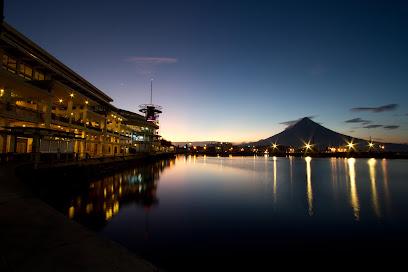
Peñaranda Park
Discover the beauty of nature and local culture at Peñaranda Park, a must-visit green space in Legazpi City with stunning views of Mayon Volcano.
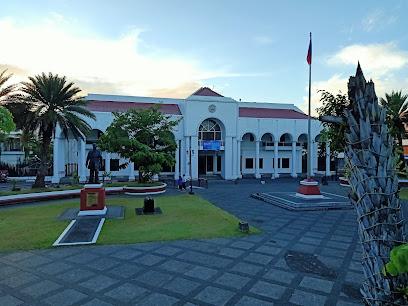
Albay Park & Wildlife
Discover the enchanting world of Albay Park & Wildlife, where nature and wildlife conservation come together in a beautiful setting.
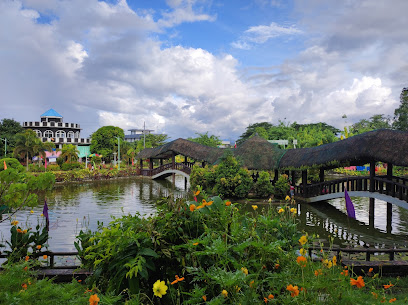
Sumlang Lake
Experience the breathtaking beauty and tranquility of Sumlang Lake, an ecological park in Camalig, Albay, surrounded by lush landscapes and stunning views.
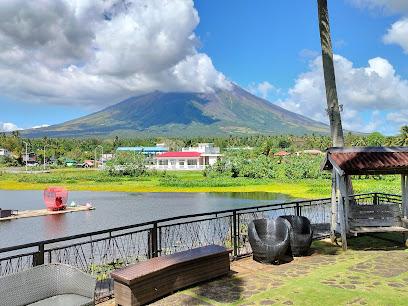
Kawa-Kawa Hill
Explore Kawa-Kawa Hill in Ligao, Albay - a serene park with breathtaking views, cultural attractions, and a giant Buddha statue amidst lush landscapes.
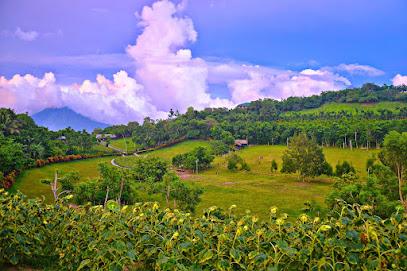
Sawangan Park
Explore the natural beauty of Sawangan Park in Legazpi City, a serene escape with stunning views of Mayon Volcano and lush landscapes.
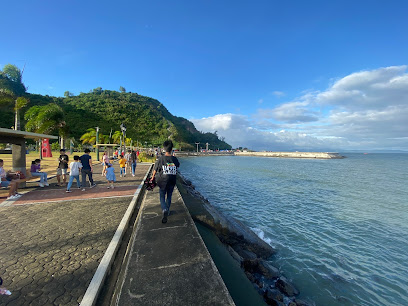
St. Gregory the Great Cathedral (Catedral de San Gregorio Magno)
Discover the beauty and spiritual significance of St. Gregory the Great Cathedral in Legazpi City, a must-visit landmark steeped in history and culture.
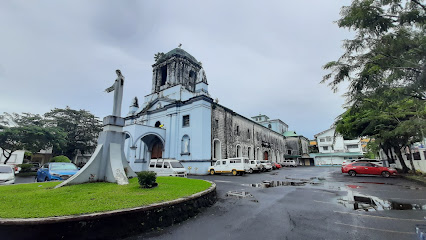
Kalayaan Park
Embrace nature's beauty at Kalayaan Park in Legazpi City, a perfect blend of tranquility and community spirit for every traveler.
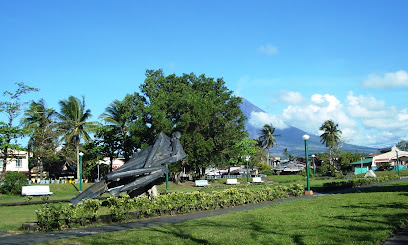
Cagraray Eco-Energy Park
Discover the beauty of nature and sustainability at Cagraray Eco-Energy Park, an eco-friendly haven in Bacacay, Albay, perfect for every traveler.
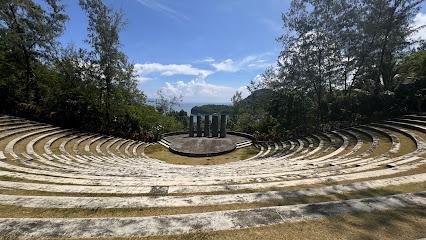
Highlands Park Legazpi
Discover exhilarating rides, delightful food, and unforgettable fun at Highlands Park Legazpi, a top-tier amusement park in the heart of Albay.
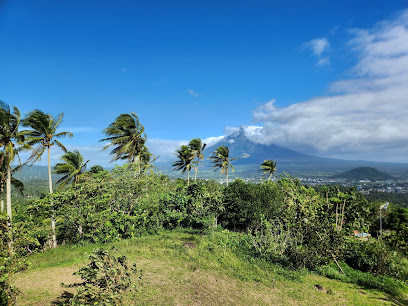
Essential places to dine
BIGGS Old Albay (OLA)
Experience authentic Filipino breakfasts at BIGGS Old Albay in Legazpi City - where flavor meets tradition in every dish.
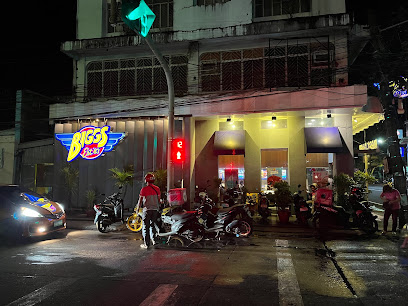
Tong Yang, SM City Legazpi
Experience the ultimate buffet at Tong Yang in SM City Legazpi with diverse flavors from local delicacies to international favorites.

Small Talk Café
Experience the best of Filipino and Asian fusion cuisine at Small Talk Café in Legazpi City - where flavors come alive!
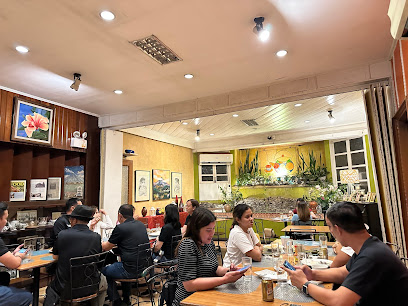
1st Colonial Grill
Experience authentic Filipino cuisine at 1st Colonial Grill in Legazpi City, where every dish tells a story and flavor reigns supreme.
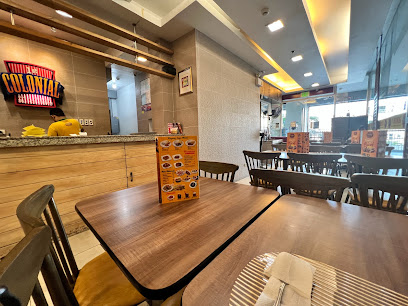
1st Colonial Grill Express
Discover the essence of Filipino cuisine at 1st Colonial Grill Express in Legazpi City - where tradition meets taste.

Uncle Ton's
Experience authentic Italian flavors at Uncle Ton's – where traditional recipes meet local ingredients in Legazpi City.
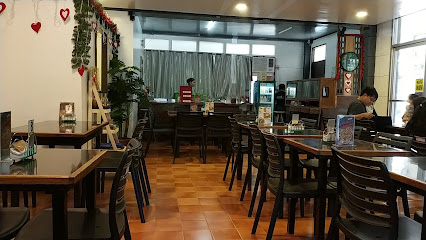
Breakfast Republik
Experience the best breakfast in Legazpi City at Breakfast Republik – where local flavors meet global inspirations in a cozy setting.
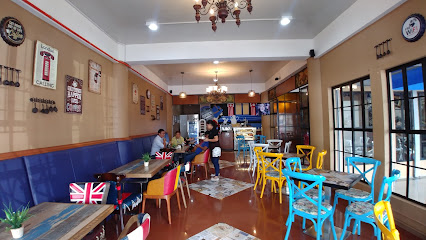
Zoe's Kitchen
Discover Zoe's Kitchen in Legazpi City for an unforgettable culinary journey filled with authentic Filipino flavors and delightful international dishes.
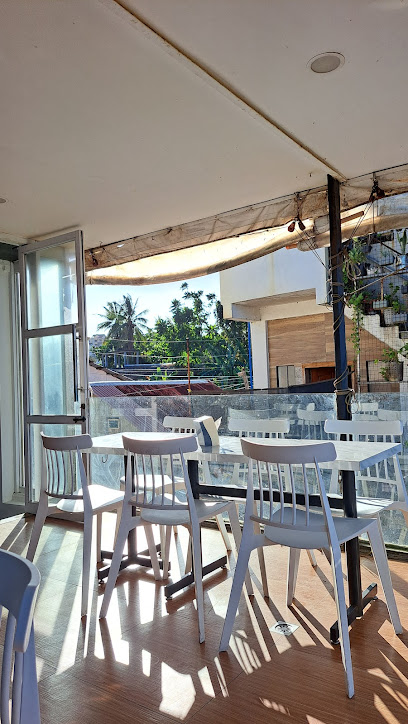
Pares King
Savor authentic Filipino breakfast at Pares King in Legazpi City - where every dish tells a story.
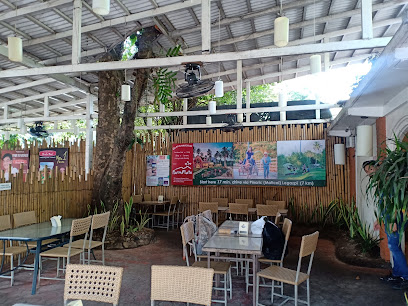
Pares Queen
Savor authentic Filipino cuisine at Pares Queen in Legazpi City—where tradition meets flavor!
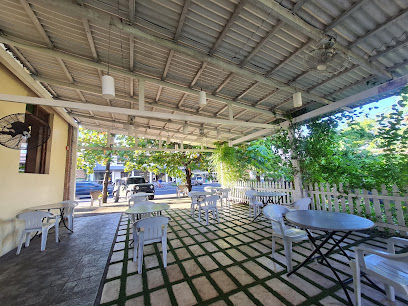
Legazpi Four Seasons Restaurant
Experience the best of local and international cuisine at Legazpi Four Seasons Restaurant – where every meal is a celebration.
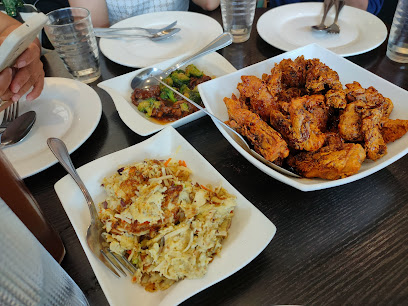
Chachi's Kitchen
Discover authentic Indian cuisine at Chachi's Kitchen in Legazpi City—where every dish tells a flavorful story.
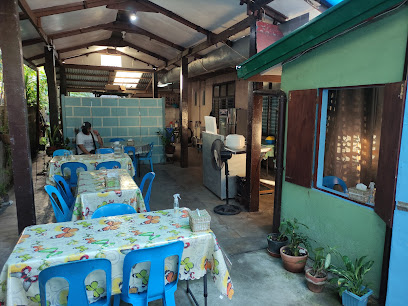
Sibid-Sibid Food Park
Explore Sibid-Sibid Food Park in Legazpi City for a delightful culinary journey featuring fresh seafood and vibrant local flavors.

Romantic Baboy
Discover the essence of Korean cuisine at Romantic Baboy in Legazpi City – where grilling meets gourmet delight.
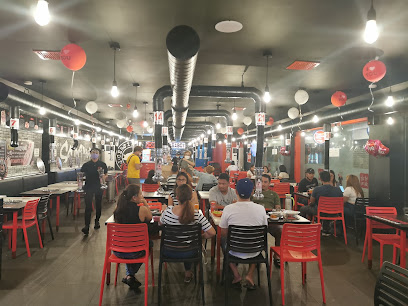
Boklan Food Center
Experience authentic Chinese and Filipino flavors at Boklan Food Center in Legazpi City – where culinary tradition meets modern taste.
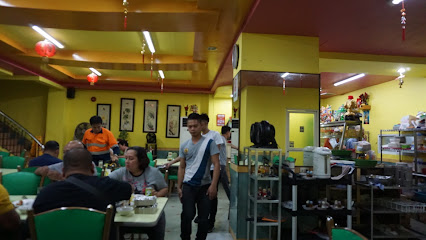
Markets, malls and hidden boutiques
SM City Legazpi
Discover the vibrant shopping and dining experience at SM City Legazpi, where local culture meets modern retail in a lively atmosphere.
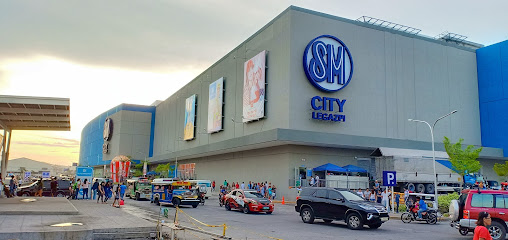
SM Store - Legazpi
Explore the diverse offerings of SM Store - Legazpi, where shopping meets local culture and excitement in Albay.
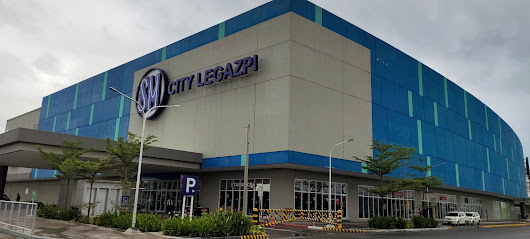
Totie Shoppe
Explore Totie Shoppe in Legazpi City for unique clothing that reflects the rich culture and artistry of the Philippines. Discover your perfect outfit today!

UNIQLO SM City Legazpi
Explore modern fashion and quality essentials at UNIQLO SM City Legazpi, where style meets affordability in a vibrant shopping environment.

N Town Legazpi
Explore N Town Legazpi for unique fashion finds and sustainable shopping in the heart of Legazpi City, Albay.

Lilay's Pasalubong Atbp.
Explore the rich culture of Albay at Lilay's Pasalubong Atbp., a charming general store offering authentic local products and warm hospitality.

J Gift Shop at Furniture
Discover the essence of Philippine craftsmanship at J Gift Shop, Legazpi City - a haven for unique souvenirs and local artistry.

Initial Art & Design Center
Explore the Initial Art & Design Center in Legazpi City for unique souvenirs and a taste of local Filipino artistry.

ANDES STORE
Discover the essence of Albay at Andes Store, where local crafts and unique souvenirs await your exploration.
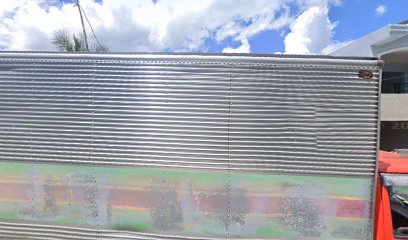
The Labyrinth
Discover unique fashion finds at The Labyrinth, Legazpi City's premier clothing and shoe store, blending local culture with trendy styles.

J.E Boutique
Explore stylish clothing and local designs at J.E Boutique in Legazpi City, where Filipino fashion meets contemporary trends.
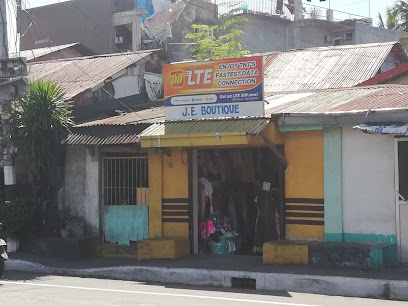
sheykiezzykae store
Explore innovative gadgets and lifestyle products at Sheykiezzykae, a smart shop in the heart of Legazpi City, Albay.
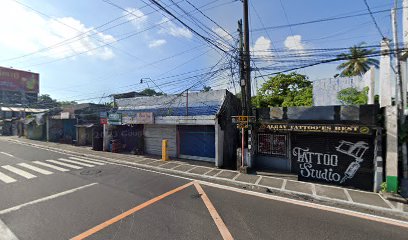
Main Cloud Shop
Explore the vibrant local culture at Main Cloud Shop in Legazpi City, where unique souvenirs and artisanal goods await every traveler.
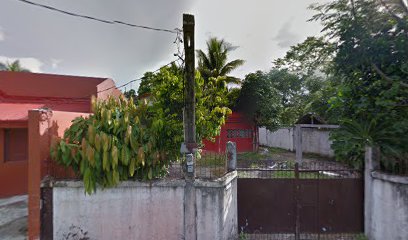
Victoria Resell Shop
Explore Victoria Resell Shop in Daraga for unique home goods and local crafts that embody the rich culture of Albay, Philippines.
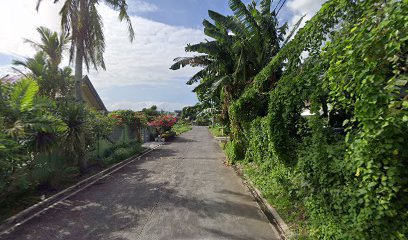
Miutiso - Ayala Malls Legazpi
Experience the local charm at Miutiso in Ayala Malls Legazpi, where shopping meets the vibrant culture of Albay.
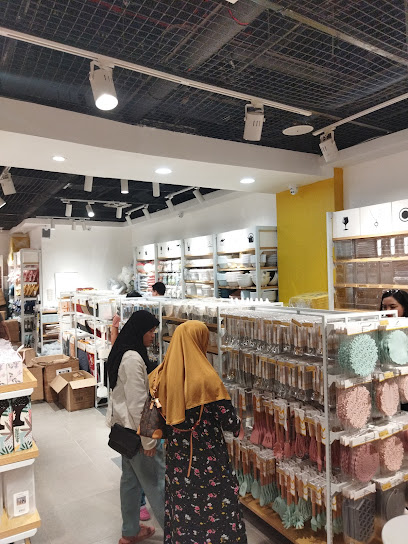
Essential bars & hidden hideouts
GABBI'S RESTOBAR & GRILL
Experience the vibrant atmosphere and delectable grilled dishes at Gabbi's Restobar & Grill in Legazpi City, the perfect dining destination for tourists.
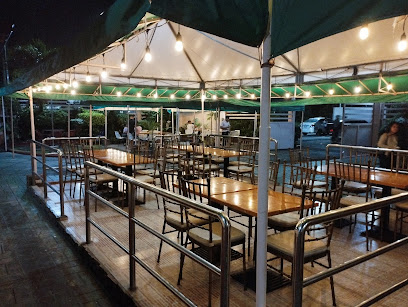
Bar 101
Discover the vibrant nightlife of Legazpi City at Bar 101, a lively pub with a fantastic selection of drinks and live entertainment.

Quento
Discover the vibrant nightlife at Quento in Legazpi City, a must-visit bar offering delightful drinks and live entertainment for an unforgettable experience.
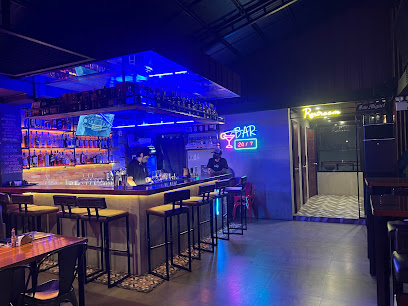
Kapuntukan Resto Bar and Grille
Experience the vibrant flavors of Filipino cuisine at Kapuntukan Resto Bar and Grille, set against the stunning backdrop of Legazpi Port.
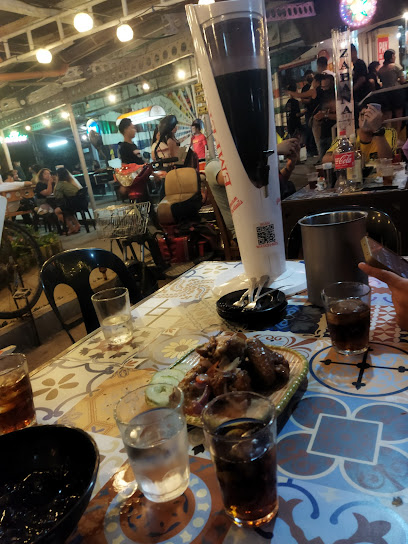
Chilo Bar
Experience the vibrant nightlife of Legazpi City at Chilo Bar, where great drinks and lively atmosphere await every visitor.
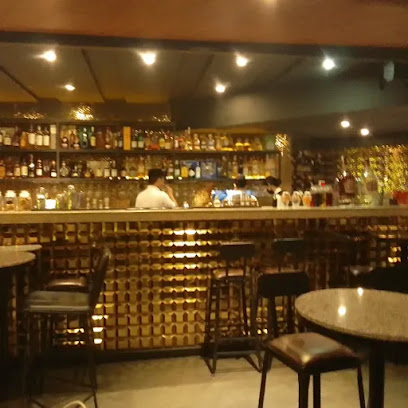
21st Amendment
Experience the lively nightlife at 21st Amendment Bar in Legazpi City, a perfect blend of local flavors and vibrant atmosphere.
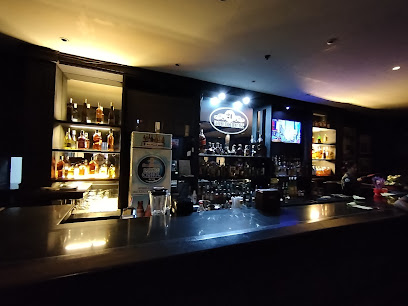
Yuris Bar and Grill
Experience the vibrant flavors of Legazpi City at Yuris Bar and Grill, a delightful blend of bar and restaurant ambiance.
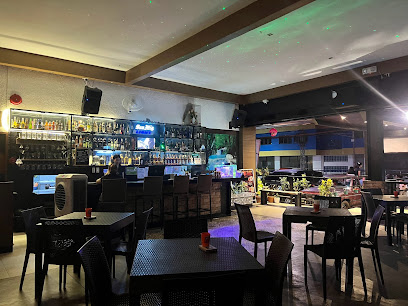
Subway Resto Bar
Savor the best grilled dishes in a cozy atmosphere at Subway Resto Bar in Legazpi City, a perfect stop for culinary delights and relaxation.

District 2 Restobar
Discover the vibrant nightlife at District 2 Restobar in Legazpi City, where lively ambiance meets delightful drinks and local music.
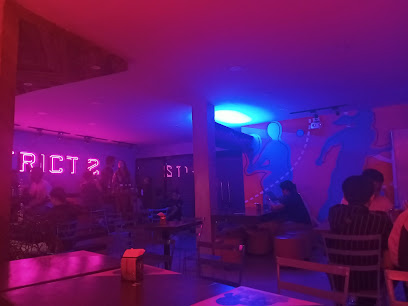
4D' Road Resto Bar & Cafe
Discover a vibrant dining experience at 4D' Road Resto Bar & Cafe, where local flavors meet a lively atmosphere in Legazpi City.
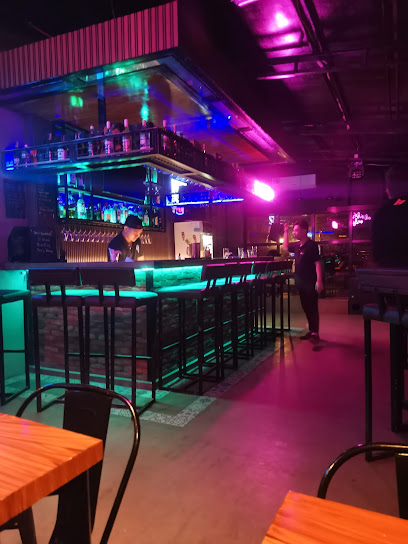
Pod1um Restobar
Discover the vibrant culinary scene at Pod1um Restobar in Legazpi City, where delicious food meets refreshing drinks in a lively atmosphere.
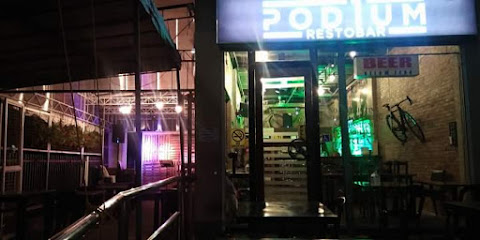
SRB Sanroque Resto Bar
Experience the lively atmosphere and refreshing drinks at SRB Sanroque Resto Bar in Legazpi City, Albay, perfect for unwinding after a day of exploration.

Resto Bar Bikers Burgers&Chesese
Experience the best of local cuisine at Bikers Burgers & Cheese in Legazpi Port, where delicious burgers meet stunning views.
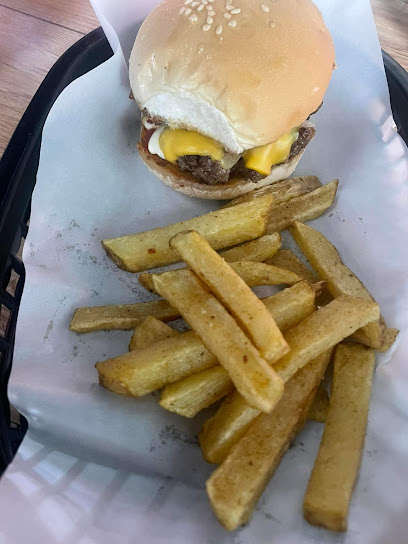
Papa Boy's Bar And Grill
Discover the lively nightlife at Papa Boy's Bar And Grill in Legazpi City, where delicious food and refreshing drinks await you.
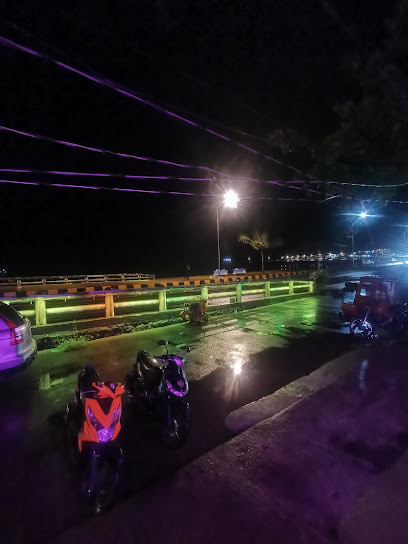
CHICOS BAR & CAFE
Experience the vibrant flavors and welcoming atmosphere of Chicos Bar & Cafe, a must-visit spot in Legazpi City, Albay.

Local Phrases
-
- HelloHola
[ho-la] - GoodbyePaalam
[pa-a-lam] - YesOo
[o-o] - NoHindi
[hin-di] - Please/You're welcomeMangyaring
[man-gya-ring] - Thank youSalamat
[sa-la-mat] - Excuse me/SorryPasensya
[pa-sen-sya] - How are you?Kamusta ka?
[ka-mus-ta ka?] - Fine. And you?Mabuti. Ikaw?
[ma-bu-ti. i-kaw?] - Do you speak English?Nag-e-English ka?
[nag-e-english ka?] - I don't understandHindi ko maintindihan
[hin-di ko main-tin-di-han]
- HelloHola
-
- I'd like to see the menu, pleaseGusto ko sanang makita ang menu, mangyaring
[gus-to ko sa-nang ma-ki-ta ang me-nu, man-gya-ring] - I don't eat meatHindi ako kumakain ng karne
[hin-di a-ko ku-ma-ka-in ng kar-ne] - Cheers!Tagay!
[ta-gay!] - I would like to pay, pleaseGusto ko sanang magbayad, mangyaring
[gus-to ko sa-nang mag-ba-ya-ad, man-gya-ring]
- I'd like to see the menu, pleaseGusto ko sanang makita ang menu, mangyaring
-
- Help!Tulong!
[tu-long!] - Go away!Lumayas ka!
[lu-ma-yas ka!] - Call the Police!Tumawag ng Pulis!
[tu-ma-wag ng pu-lis!] - Call a doctor!Tumawag ng doktor!
[tu-ma-wag ng dok-tor!] - I'm lostNawawala ako
[na-wa-wa-la a-ko] - I'm illSakit ako
[sa-kit a-ko]
- Help!Tulong!
-
- I'd like to buy...Gusto ko sanang bumili...
[gus-to ko sa-nang bu-mi-li...] - I'm just lookingNagtitinda lang ako
[nag-ti-tin-da lang a-ko] - How much is it?Magkano ito?
[mag-ka-no i-to?] - That's too expensiveMasyadong mahal iyan
[ma-sya-dong ma-hal i-yan] - Can you lower the price?Pwede bang babaan ang presyo?
[pwe-de bang ba-ba-an ang pres-yo?]
- I'd like to buy...Gusto ko sanang bumili...
-
- What time is it?Anong oras na?
[a-nong o-ras na?] - It's one o'clockAlas-una na
[a-las-u-na na] - Half past (10)Alas-diyes y medya
[a-las-dyes y med-ya] - MorningUmaga
[u-ma-ga] - AfternoonHapon
[ha-pon] - EveningGabi
[ga-bi] - YesterdayKahapon
[ka-ha-pon] - TodayNgayon
[nga-yon] - TomorrowBukas
[bu-kas] - 1Isa
[i-sa] - 2Dalawa
[da-la-wa] - 3Tatlo
[tat-lo] - 4Apat
[a-pat] - 5Lima
[li-ma] - 6Anim
[a-nim] - 7Pito
[pi-to] - 8Walo
[wa-lo] - 9Siyam
[si-yam] - 10Sampu
[sam-pu]
- What time is it?Anong oras na?
-
- Where's a/the...?Nasaan ang...?
[na-sa-an ang...?] - What's the address?Ano ang address?
[a-no ang ad-dres?] - Can you show me (on the map)?Pwede mo akong ipakita (sa mapa)?
[pwe-de mo a-kong i-pa-ki-ta (sa ma-pa)?] - When's the next (bus)?Kailan ang susunod na (bus)?
[ka-i-lan ang su-su-nod na (bus)?] - A ticket (to ....)Isang tiket (papuntang ....)
[i-sang ti-ket (pa-pun-tang ....)]
- Where's a/the...?Nasaan ang...?
History of Legazpi
-
Legazpi, named after the Spanish conquistador Miguel López de Legazpi, was originally a small fishing settlement known as Sawangan. It was established as a town on September 22, 1856, by the Spanish colonial government. The town was named Albay in 1587 and later renamed Legazpi in 1925 to honor the Spanish explorer who led the expedition that conquered the Philippines in 1565.
-
During the Philippine Revolution against Spanish rule in the late 19th century, Legazpi played a significant role. The region became a hotbed of revolutionary activities, with many locals joining the Katipunan, a secret revolutionary society. The revolutionaries in Legazpi fought bravely, contributing to the broader struggle for Philippine independence.
-
Legazpi was not spared during World War II. In December 1941, Japanese forces occupied the city, leading to a period of hardship and resistance. The local guerrilla movement was active in the area, conducting operations against the Japanese occupiers. The city was liberated by American and Filipino forces in April 1945, marking the end of the occupation.
-
Mayon Volcano, one of the most active volcanoes in the Philippines, is a significant landmark near Legazpi. Its eruptions have shaped the history of the city. The most destructive eruption occurred in 1814, burying the town of Cagsawa in lava and ash. The church ruins, known as the Cagsawa Ruins, remain a poignant reminder of this natural disaster and are a popular tourist destination today.
-
In the latter half of the 20th century, Legazpi underwent significant economic development and modernization. The establishment of the Legazpi City International Airport and the opening of various commercial and industrial establishments transformed the city into a regional economic hub. Today, Legazpi is known for its vibrant economy, driven by tourism, agriculture, and commerce.
-
Legazpi is rich in cultural heritage, with traditions deeply rooted in Bicolano culture. The city celebrates various festivals, the most notable being the Ibalong Festival, which reenacts the epic tale of the ancient heroes of Bicol. This festival, held every August, showcases colorful parades, street dances, and theatrical performances, reflecting the city's rich cultural tapestry.
Legazpi Essentials
-
Legazpi is accessible via several modes of transportation. The most common way to reach Legazpi is by air, with the Bicol International Airport located approximately 15 kilometers from the city center. Flights are available from Manila and other major cities in the Philippines. Alternatively, you can take a bus from Manila, which takes around 10 to 12 hours. There are also train services provided by the Philippine National Railways from Manila to Legazpi, offering a scenic journey through the countryside.
-
Within Legazpi, various forms of transportation are available. Jeepneys and tricycles are the most common and affordable means of getting around. Taxis and ride-hailing services like Grab are also available. For a more local experience, try riding a ‘Habal-Habal,’ a motorcycle taxi. Car rentals are available for those who prefer to explore at their own pace. Walking is a great option in the city center where many attractions are close to each other.
-
The official currency in the Philippines is the Philippine Peso (PHP). Credit cards are widely accepted in hotels, restaurants, and larger shops. However, it is advisable to carry cash for smaller establishments and local markets. ATMs are readily available throughout Legazpi, but it's wise to have some cash on hand, especially if you plan on visiting more remote areas.
-
Legazpi is generally a safe city for tourists. However, it is always best to exercise standard precautions. Avoid displaying valuables and be cautious in crowded areas. Some neighborhoods, such as those near the bus terminals and ports, can be more prone to petty crimes like pickpocketing. It is advisable to avoid these areas after dark if you are unfamiliar with the surroundings.
-
In case of emergency, dial 911 for police, fire, or medical assistance. The Bicol Regional Training and Teaching Hospital is the primary medical facility in Legazpi. Pharmacies are widely available for minor health issues. It is recommended to have travel insurance that covers medical emergencies. The local police and barangay (village) offices are also available for assistance.
-
Fashion: Do dress modestly, especially when visiting religious sites. Avoid wearing revealing clothing. Religion: Do respect local customs and traditions. Always cover your head when entering churches and monasteries. Public Transport: Do be respectful and give up your seat to elderly passengers. Don’t eat or drink on public transport. Greetings: Do greet people with a smile and a slight nod. A handshake is also common. Eating & Drinking: Do try local delicacies and accept food offerings graciously. Don’t refuse hospitality, as it is considered impolite.
-
To experience Legazpi like a local, visit the local markets where you can buy fresh produce and traditional Filipino goods. Engage with locals, as they are often friendly and willing to share stories about the area’s history and culture. Don’t miss visiting the Cagsawa Ruins and the Legazpi Boulevard for stunning views of Mayon Volcano. For a unique experience, take a tricycle ride to the nearby Lignon Hill for a panoramic view of the city and the volcano.
Trending Landmark in Legazpi
-
Cagsawa Ruins
-
SM City Legazpi
-
Ayala Malls Legazpi
-
Pacific Mall
-
Mayon Volcano Natural Park
-
Daraga Church
-
Ligñon Hill Nature Park
-
Embarcadero de Legazpi
-
Peñaranda Park
-
Albay Park & Wildlife
-
The Oriental Legazpi
-
St. Gregory the Great Cathedral (Catedral de San Gregorio Magno)
-
Kalayaan Park
-
1st Colonial Grill
-
Albay Astrodome
Nearby Cities to Legazpi
-
Things To Do in Boracay
-
Things To Do in Cebu City
-
Things To Do in Tagaytay
-
Things To Do in Manila
-
Things To Do in Bohol
-
Things To Do in Angeles City
-
Things To Do in Subic
-
Things To Do in Siargao
-
Things To Do in Camiguin
-
Things To Do in Baguio
-
Things To Do in Cagayan de Oro
-
Things To Do in Sagada
-
Things To Do in Vigan
-
Things To Do in Ilocos Norte
-
Things To Do in Puerto Princesa













